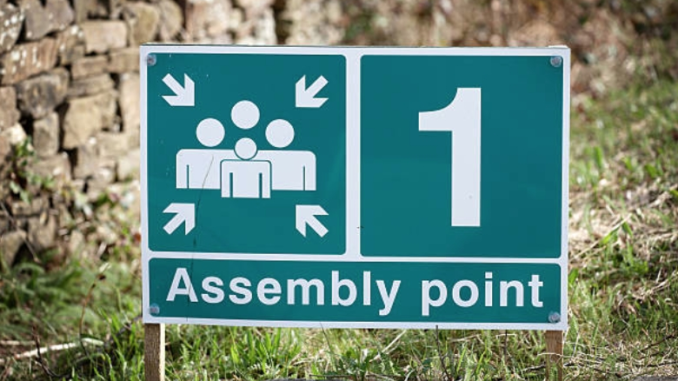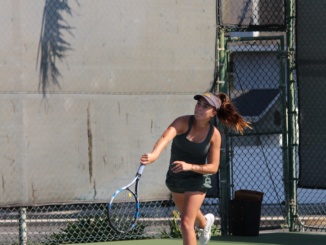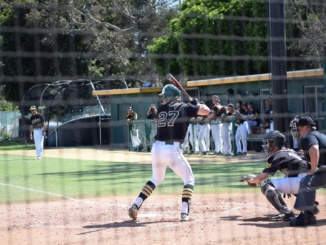
DRILL PRO:
Kareena Dhillon
Executive Opinion Editor
January’s active shooter drill offered many new insights to Mira Costa’s safety and was integral in allowing staff and students to practice and retain important information in the case of a school shooting. The administration notified all staff and students ahead of time to be prepared when the time came.
The drill was originally scheduled to be three hours long, however, with success and order it only took two hours, according to Costa principal Dr. Ben Dale.Within that time, officials were able to conduct a search of the entire campus. The staff, students, and outside agencies did an outstanding job Dale said.
It helped prepare for every scenario and contingency before an actual emergency ever happened, said Dale. The high number of school shootings that have shaped our reality force schools to learn to be prepared. It would be a frivolous attempt to question the validity of drills when they are used all across America.
The purpose of the drill was not only to help police officials and SWAT team members, but it was to prepare in the face of actual emergency. There was excellent assistance from Chief Derrick Abell and Megan Locklear from MBPD to carry out the drill. Their role in the event helped to bring leadership and productivity. Drills are a necessary and important aspect of school protocols conducted at every level of education. There have been 37 school shootings just this year and students cannot help but feel threatened every time they go to school. These drills are what help students feel safe.
However, it is also important to have widespread and shared knowledge of what is actually happening during a drill. Students have become more prepared because of the efficiency of drills. According to the National Center for Education Statistics, public schools that practice drills involving a shooting have been up to 70% more efficient in real situations.
At Costa, there have been numerous drills that have helped prepare students for what an actual emergency would look like including lockdowns and the Great Shakeout drill. Costa’s large campus has many exits and outlets onto major streets that could be used as evacuation options. During this drill, students were able to practice how they would behave during an actual emergency by hiding and covering themselves away from windows. Because students constitute the largest population at MCHS, and are the group most likely to not know what to do, it is vital to inform students of correct procedures in case of an actual emergency.
Costa’s administration effectively carried out the drill, which provided an opportunity for teachers to recognize how organized students were during evacuation. Police even practiced and attempted breaking through the doors to see if classrooms’ barricades were effective. This attention to detail simulated a real emergency.
Practicing drills can help reveal issues that cannot be seen on paper according to the National Center for Education Statistics. Practicing drills can develop greater consistency in action and more efficient use of resources. Just a year after the Parkland shooting, it is imperative that students be prepared to protect themselves in the case of an active shooter.
Moving forward, it is important to keep this awareness in mind and retain safety procedures. Staying well prepared for emergencies with drills such as these can help alleviate the worries staff and students have about what to do in an emergency situation. While the fact that we have to teach students how to proceed in an emergency is sad, it is an integral part of our society today. In a perfect world, students wouldn’t have to worry about their safety at school, but we are forced to consider the threat and danger of a gun. It reflects well upon the district that Costa has taken the steps to improve the safety of students during school hours.
DRILL CON:
Sam Bell
Staff Writer
School emergency drills are held as precautionary measures in order to ensure the safety of the students and the staff on campus in real-time emergencies. However, the safety drill on Jan. 30 was anything but beneficial for the students that attended school that day. The students of Mira Costa were informed of the drill ahead of time, however, it was obvious that teachers were uninformed about the procedures, leading to an overall sense of confusion.
There was a lack of communication between administration and teachers according to several Costa teachers. During the drill, many students were unaware of which building or what field to evacuate to, according to senior Vincent Galli.
The drill was not taken seriously by students, as seen by the poor attendence. During first period 468 students were absent. A body of students comprising of almost 17% of the entire student population, the drill did not have any benefit for any of the students who were not in attendance. The drill was meant to help both the teachers and law enforcement officials understand how to handle a lockdown situation in the event of a real-time emergency. However, with such a low attendance rate, not all students were able to gain the benefits of preparing for an emergency.
The drill began during first period at 8:30 am when classrooms were instructed to go into lockdown. The Police Department released each class one by one and led them down to Waller Stadium or the baseball field. Some classes were forced to wait in their classroom for the majority of the drill, according to junior Lauren Daniels. The classes which stayed inside sat around for over two hours in silence.This proved to be a waste of time as the students were learning nothing about the simulated situation or what was going on. It was difficult to understand the situation as the students were deprived of any information regarding what was going on outside their classroom, or when they would be released, Daniels said.
The classes which were led to the field by police officials were directed to walk in single file lines with their hands on each other’s shoulders down to the field. There, they waited on the field in disorganized groups for over two hours, junior Brooke Ballantine said. It also should be noted that in the event of an actual school shooting, the field is not a covered environment and is on low ground, completely susceptible to threats. There is no safety on the large space and students did not have access to any exits in the case of an actual emergency. It was impractical to think the field, although very large in size, would protect against a threat. When it was cleared, the field was left trashed with food and scant materials.
Most students were expecting a drill that was more educational in order to inform them of what to do in case of an active shooter. However, the school provided a drill that was more beneficial as training for the Police Department and rather pointless for the students. The timing of the drill was also very inconvenient. According to Dale, the drill was held during first period because in the afternoon students need to eat lunch and, depending on schedules, some are leaving campus after lunch. However, the principal’s timing did not account for the many tardy students, or even those without a first period such as students on the surf team. Students who arrived later were directed to walk off-campus to Pennekamp or Journey of Faith.
The drill was both inconvenient and ineffective for the students who attended school that day, as the drill lacked an educational aspect that would have helped with the understanding of what was happening throughout the day. Instead, students were obligated to sit around without any real purpose or understanding to what they were doing. The whole process could have been planned out more effectively for better student efficiency and overall attendance.




Leave a Reply